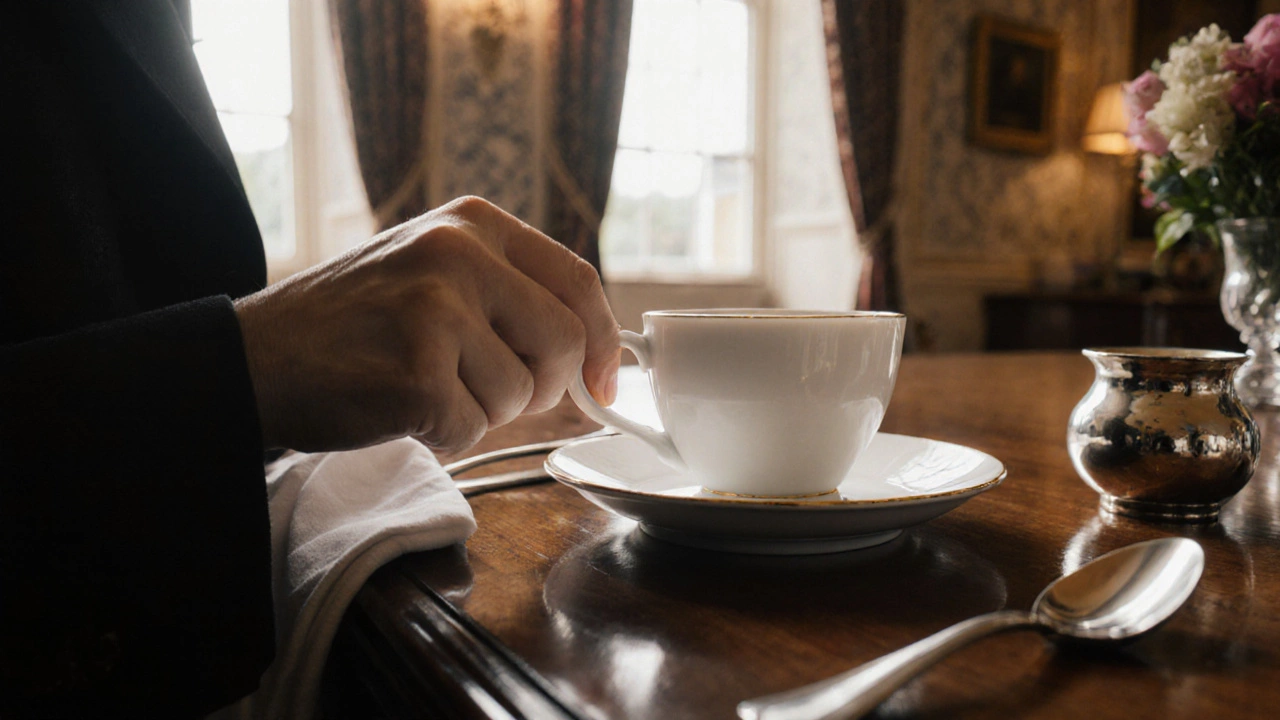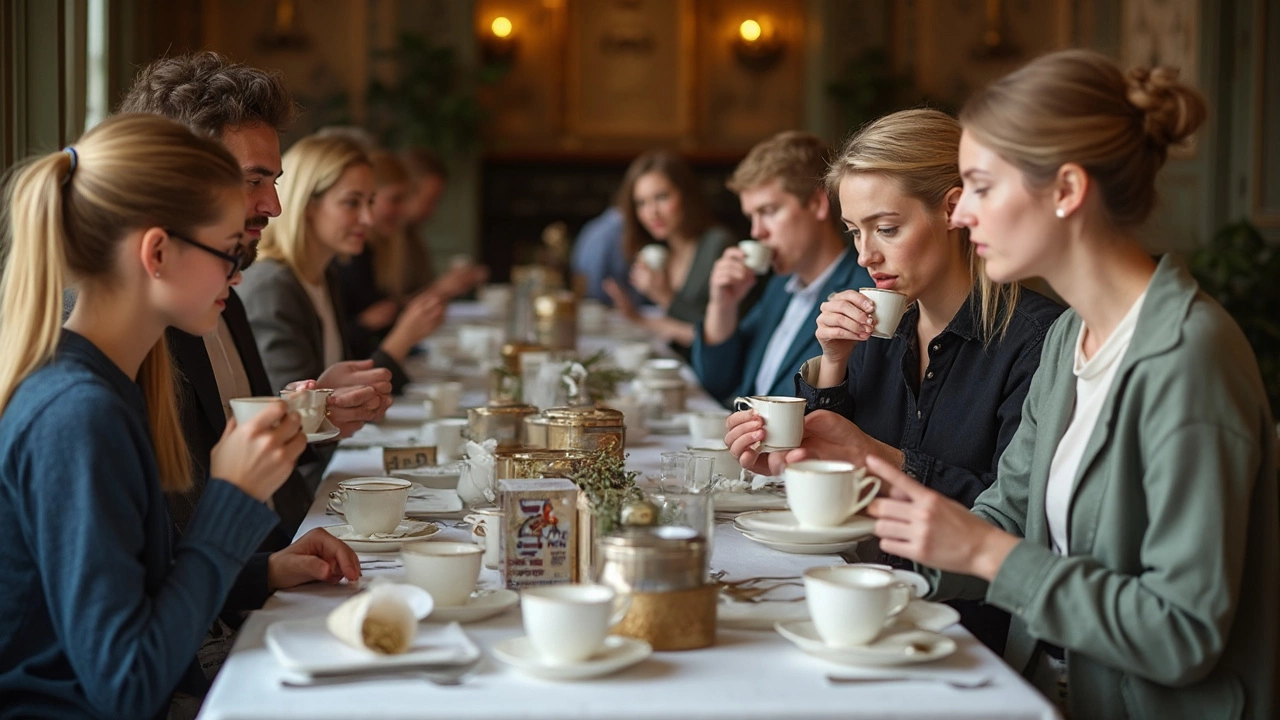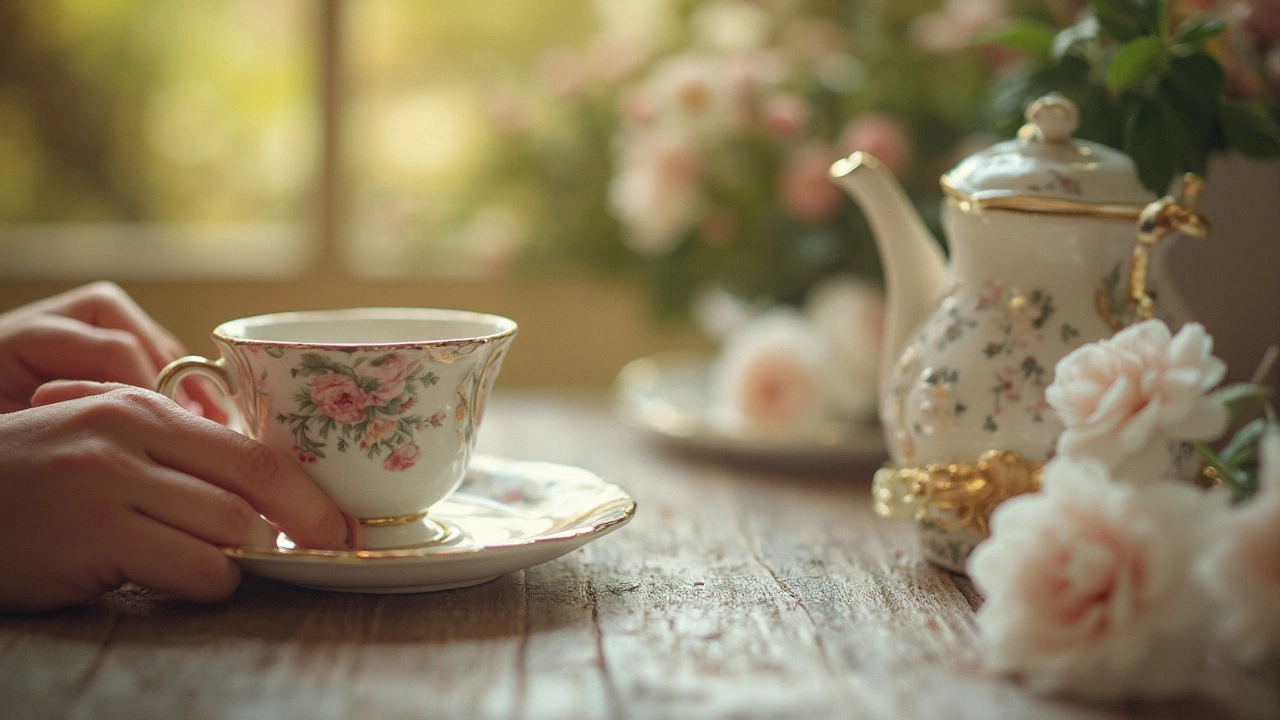Tea Etiquette: Simple Rules for Modern Sippers
Whether you’re at a fancy tea house or just brewing a pot at home, a few etiquette basics make the experience smoother for everyone. Think of it as a friendly cheat sheet, not a strict rulebook.
Basics of Tea Etiquette
First, the pour. If you’re serving guests, always pour from the right and fill each cup about three‑quarters full. This gives room for the tea to breathe and avoids spills. When you’re the guest, let the host pour for you; it’s a sign of respect in many tea cultures.
Hold the cup with your thumb and index finger under the handle. Don’t grip it like a mug; a light grip keeps the tea warm and looks polished. When you sip, take a small taste first. This shows you’re appreciating the flavor before diving in.
Stirring? If you add milk or sugar, use a gentle clockwise motion. Over‑stirring can break the tea’s delicate foam, especially with matcha or fine black teas. And remember, never dunk a biscuit straight into the cup – that’s a no‑no in most traditions.
Talking while drinking? Keep it light. If you’re in a formal setting, wait until you’ve taken a sip before speaking. This avoids pausing mid‑conversation to swallow, which can be a bit awkward.
Modern Tea Etiquette Tips
Today’s tea gatherings mix old customs with new vibes. Here are a few tweaks that work well in casual settings:
1. Self‑Serve Stations – If you set up a tea bar, label each tea clearly. Guests can pick their brew, add milk or lemon, and feel in control. Just make sure you have separate spoons for each pot to keep flavors pure.
2. Phone Etiquette – Keep phones on silent and out of sight while sipping. If you need to check a recipe or share a photo, step away briefly. It shows you value the moment and the people around you.
3. Sharing Knowledge – If you know a fun fact about the tea you’re drinking, share it! A quick note about the region, the harvest, or the best food pairing can spark conversation and make the experience richer.
4. Temperature Matters – Let hot teas cool a few minutes before the first sip. Burning your tongue isn’t just painful; it masks the subtle flavors you’re trying to enjoy.
5. Food Pairings – Offer light snacks like shortbread, fresh fruit, or cheese that complement the tea. For example, a mild cheddar works well with a robust black tea, while a citrusy scone pairs nicely with green tea.
Remember the golden rule: tea is meant to be enjoyed. If something feels too rigid, feel free to adapt it to your group’s vibe. The goal is a relaxed, respectful experience where everyone can savor the brew.
Want more ideas? Check out our article “What to Serve at a Tea Tasting: Food Pairings, Teas, and Tasting Setup Guide” for deeper pairing tips, and “Is It Safe to Drink 10‑Year‑Old Tea?” for storage advice. With a few simple practices, you’ll feel confident any time tea is on the table.
Learn the essential table manners for drinking tea, from how to hold your cup to regional etiquette differences, with easy tips and a handy FAQ.
View DetailsIs slurping your tea actually rude, or is it a sign you really know your stuff? This article breaks down when slurping is totally fine and when it’s frowned upon. You’ll get a look at why slurping matters in professional tea tasting, the roots of tea etiquette, and how different cultures see it. If you want to enjoy your next cup of tea with confidence, these tips will help you get it just right. Get the facts and avoid awkward moments.
View DetailsUnravel the mystery of whether you should lift the saucer when enjoying your cup of tea. Discover insights into tea etiquette, explore the function of the saucer, and uncover tips for the perfect tea tasting experience. Navigate through intriguing facts about tea customs and boost your tea-drinking skills. Let's sip into the world of tea with clarity and confidence.
View Details



